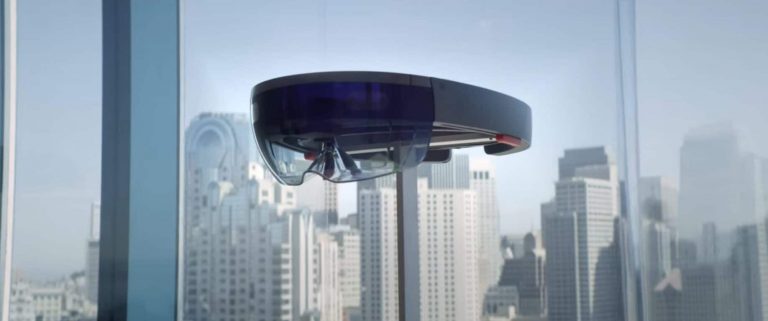The Windows 10 Creators Update will bring a considerable update to mixed reality on Windows 10. The Microsoft HoloLens Development Edition was Microsoft’s first foray into augmented reality (AR) and mixed reality. Since that time, a number of other companies have joined Microsoft to put out their own virtual reality (VR) headsets, including the Oculus Rift VR Headset, and HTC VIVE VR System. VR is a more closed-off experience than AR and Microsoft plans to use HoloLens more and more in future Windows 10 update to blur the line between VR and AR experiences, so the Creators Update is just the beginning.
Microsoft will have new mixed reality features available in the Windows 10 Creators Update to view Windows 10 apps, games, movies, TV, music, and more. In this video, Microsoft explains mixed reality in Windows 10 and the differences between AR and VR.
At CES 2017, Microsoft announced its partnerships with HP, Lenovo, Dell, Acer and ASUS to create more affordable VR headsets that are priced starting at $299 and up. These more affordable VR headsets may prove to be a better alternative to the more expensive Oculus Rift and the HTC VIVE. All of these headsets are priced significantly lower than the $3,000 Microsoft HoloLens Development Edition, but HoloLens is the only headset that delivers a true mixed reality experience.
In order to have the processing power to run these Windows 10 VR headsets, you will need the proper Windows 10 PC computing hardware. The minimum technical specifications for the lower-priced Windows 10 headsets significantly lower than the requirements for Oculus Rift or HTC VIVE. Here are Microsoft’s minimum technical specifications for VR in the Windows 10 Creators Update:
- CPU: Intel Mobile Core i5 (e.g. 7200U) Dual-Core with Hyperthreading equivalent (Kaby Lake)
- GPU: Integrated Intel® HD Graphics 620 (GT2) equivalent or greater DX12 API Capable GPU
- RAM: 8GB+ Dual Channel required for integrated graphics
- HDMI: HDMI 1.4 with 2880 x 1440 @ 60 Hz, HDMI 2.0 or DP 1.3+ with 2880 x 1440 @ 90 Hz
- Storage: 100GB+ SSD (Preferred) / HDD
- Bluetooth: 4.0 and above for accessories
In this video, Microsoft explains how VR headsets and HoloLens differ in Windows 10 and how HoloLens is the one device that is the “first, fully self-contained holographic computer” that offers a true mixed reality experience. While HoloLens is expensive, HoloLens does not require any additional setup; there are no like extra sensors necessary for HoloLens to work.
Microsoft has 161 apps (and counting) for HoloLens to use with the Windows 10 Creators Update. HoloLens will become a more integral part of Microsoft’s focus on mixed reality in the Windows 10 Creators Update. Here is an example of the HoloLens being used in a real-life enterprise scenario in the near future. Microsoft’s Holographic Academy provides developers with tutorials on how to get started developing HoloLens apps.
The Windows 10 Creators Update will also bring a new “Mixed Reality” icon in Settings to manage your VR and AR device settings on your Windows 10 PC. If you want to stock up on VR headsets, mixed reality-capable Windows 10 PCs and more for the Windows 10 Creators Update, head on over to the Microsoft Store now.
What mixed reality features are you looking forward to with the Windows 10 Creators Update? Let us know in the comments.



